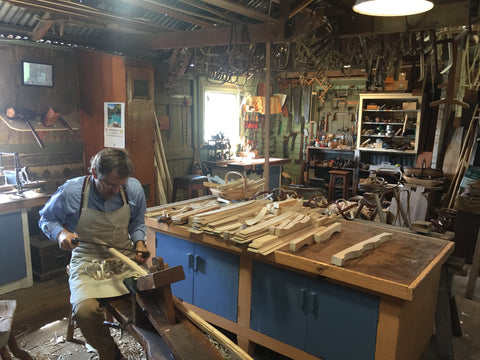Trug Making and Coppicing Wood
Mar 21 2018 0 Comments


A Sussex trug is a wooden basket. It is made from a handle and rim of coppiced sweet chestnut wood which is hand-cleft then shaved using a drawknife. The body of the trug is made of five or seven thin boards of cricket bat willow, also hand-shaved with a drawknife. They may have originated in Sussex because of the abundance of chestnut coppice and willows found on the marshes. Nails or pins used are usually copper, to avoid rust.
Shapes and sizes became standardised, the most well-known shape being the "common or garden" trug ranging in volume from one pint to a bushel. However, there is a diverse range of traditional trugs from garden and oval trugs to the more specialised "large log" and "walking stick" trugs.
The Whitestone woods (a coppice near Weston in North Otago) provides Blair with some of the timber he uses. Whitestone woods is a traditional British style plantation of Oak, Ash, Elm and Lime. These species can produce large quantities of wood in rotations as short as only seven years.
When most European and North American broad leaf trees are cut just above the ground line (far from being detrimental to the tree) the tree has renewed vigour, and from the trunk and root stock vigourous shoots are thrown up. These shoots can be harvested on a large scale and in a sustainable way at various stages of growth depending on their intended use. Coppice harvesting in this fashion has been carried out many hundreds of years.
The size of the timber depends upon the time of harvest and the variety of tree.
In this way a range of timber is produced from whippy and slender shoots through to the most sturdy of poles.
0 comments

Leave a Comment